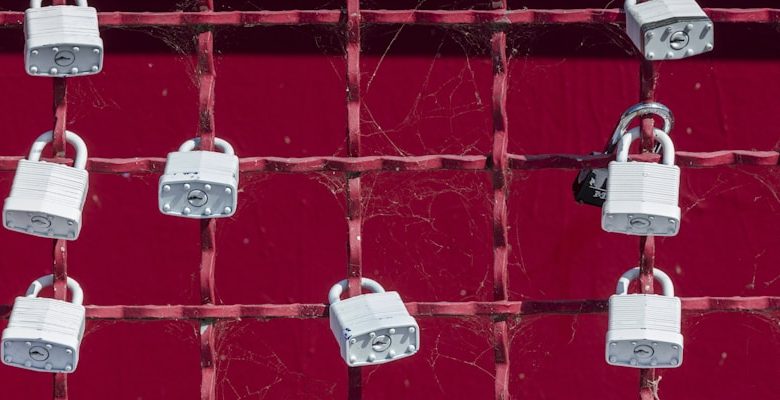How to Secure Your Crypto Transactions from Man-in-the-Middle Attacks

- Understanding Man-in-the-Middle Attacks in Crypto Transactions
- Tips for Identifying and Preventing Man-in-the-Middle Attacks in Crypto Transactions
- Importance of Encryption in Securing Your Crypto Transactions
- Best Practices for Safeguarding Your Crypto Wallet from Man-in-the-Middle Attacks
- Common Signs of a Man-in-the-Middle Attack on Your Crypto Transactions
- Tools and Technologies to Enhance Security in Crypto Transactions
Understanding Man-in-the-Middle Attacks in Crypto Transactions
Man-in-the-middle attacks are a common threat in the world of crypto transactions. In these attacks, a malicious actor intercepts communication between two parties, often without their knowledge. This allows the attacker to eavesdrop on the conversation, steal sensitive information, or even manipulate the data being transmitted.
Understanding how man-in-the-middle attacks work is crucial for protecting your crypto transactions. One way these attacks can occur is through unsecured networks, where hackers can easily access and manipulate data. Another common method is through phishing emails or fake websites that trick users into entering their private keys or passwords.
To prevent man-in-the-middle attacks, it is essential to use secure communication channels such as HTTPS when sending sensitive information. Additionally, always verify the identity of the person or website you are communicating with before sharing any confidential data. Implementing two-factor authentication and keeping your software up to date can also help protect against these types of attacks.
Tips for Identifying and Preventing Man-in-the-Middle Attacks in Crypto Transactions
When it comes to protecting your crypto transactions from man-in-the-middle attacks, there are several tips you can follow to stay secure:
- Always double-check the website URL before entering any sensitive information. Make sure it starts with “https” and has a valid SSL certificate.
- Avoid using public Wi-Fi networks for conducting crypto transactions. Hackers can easily intercept data on these networks.
- Enable two-factor authentication (2FA) whenever possible. This adds an extra layer of security to your transactions.
- Keep your software and antivirus programs up to date. Regular updates can patch any vulnerabilities that hackers may exploit.
- Be cautious of phishing emails or messages that ask for your crypto wallet information. Always verify the source before sharing any details.
By following these tips, you can significantly reduce the risk of falling victim to man-in-the-middle attacks during your crypto transactions. Stay vigilant and prioritize security to safeguard your assets.
Importance of Encryption in Securing Your Crypto Transactions
One of the most crucial aspects of securing your crypto transactions is encryption. Encryption plays a vital role in protecting your sensitive information from potential man-in-the-middle attacks. By encrypting your data, you are essentially converting it into a code that can only be deciphered with the correct decryption key. This ensures that even if a malicious actor intercepts your data, they will not be able to make sense of it without the encryption key.
When it comes to crypto transactions, encryption is especially important because these transactions involve the transfer of digital assets. Without proper encryption, your private keys, wallet addresses, and transaction details could be exposed to hackers, putting your funds at risk. By encrypting your transactions, you add an extra layer of security that helps safeguard your assets from unauthorized access.
Additionally, encryption helps protect the integrity of your transactions by ensuring that the information being sent and received is not tampered with during transit. This is crucial for maintaining the trustworthiness of the blockchain network and preventing any unauthorized modifications to your transactions. Overall, encryption is a fundamental tool in safeguarding your crypto transactions and keeping your digital assets secure.
Best Practices for Safeguarding Your Crypto Wallet from Man-in-the-Middle Attacks
When it comes to safeguarding your crypto wallet from man-in-the-middle attacks, there are several best practices you can follow to ensure the security of your transactions. One important measure is to always make sure you are using a secure and reputable wallet provider. This will help minimize the risk of falling victim to attacks.
Another crucial step is to enable two-factor authentication (2FA) on your wallet. 2FA adds an extra layer of security by requiring a second form of verification before allowing access to your funds. This can help prevent unauthorized access even if your login credentials are compromised.
It is also recommended to avoid connecting to public Wi-Fi networks when accessing your crypto wallet. Public networks are often unsecured, making them more vulnerable to man-in-the-middle attacks. Instead, use a secure and private internet connection to minimize the risk of interception.
Regularly updating your wallet software is another important practice to protect against vulnerabilities that could be exploited by attackers. Software updates often include security patches that address known weaknesses, so staying up-to-date is essential for maintaining the integrity of your wallet.
Lastly, be cautious of phishing attempts and suspicious emails that may try to trick you into revealing your login credentials or other sensitive information. Always verify the authenticity of any communication related to your wallet and never share your private keys with anyone.
Common Signs of a Man-in-the-Middle Attack on Your Crypto Transactions
There are several common signs that indicate a man-in-the-middle attack on your crypto transactions. It is important to be aware of these signs to protect your assets from potential threats. One of the key indicators of such an attack is unexpected changes in the recipient’s wallet address. If you notice any discrepancies in the address provided for your transaction, it could be a red flag for a man-in-the-middle attack.
Another sign to watch out for is unusual delays in transaction confirmations. If your transactions are taking longer than usual to be confirmed on the blockchain, it could indicate that someone is intercepting and tampering with your data. Additionally, receiving unexplained error messages or warnings when conducting transactions could also be a sign of a man-in-the-middle attack.
Furthermore, if you notice any unfamiliar devices or networks accessing your crypto wallet, it could be a sign that someone is trying to intercept your transactions. It is crucial to monitor your account activity regularly and report any suspicious behavior to your wallet provider immediately.
Tools and Technologies to Enhance Security in Crypto Transactions
There are various tools and technologies available to enhance security in crypto transactions and protect against man-in-the-middle attacks. One of the most effective ways to secure your transactions is by using a hardware wallet. Hardware wallets store your private keys offline, making it nearly impossible for hackers to access them remotely. Additionally, using multi-signature wallets can add an extra layer of security by requiring multiple signatures to authorize a transaction.
Another tool that can help secure your crypto transactions is a virtual private network (VPN). A VPN encrypts your internet connection, making it more difficult for hackers to intercept your data. Additionally, using secure communication channels such as encrypted messaging apps can help protect your transactions from being intercepted.
When making crypto transactions, it is important to double-check the recipient’s address to ensure that it is correct. Attackers can easily change wallet addresses on websites or emails to redirect funds to their own wallets. Using QR codes to scan addresses can help mitigate this risk.
Lastly, staying informed about the latest security threats and best practices in the crypto industry is crucial for protecting your assets. By regularly updating your software, following security blogs, and being cautious of phishing attempts, you can minimize the risk of falling victim to man-in-the-middle attacks.



